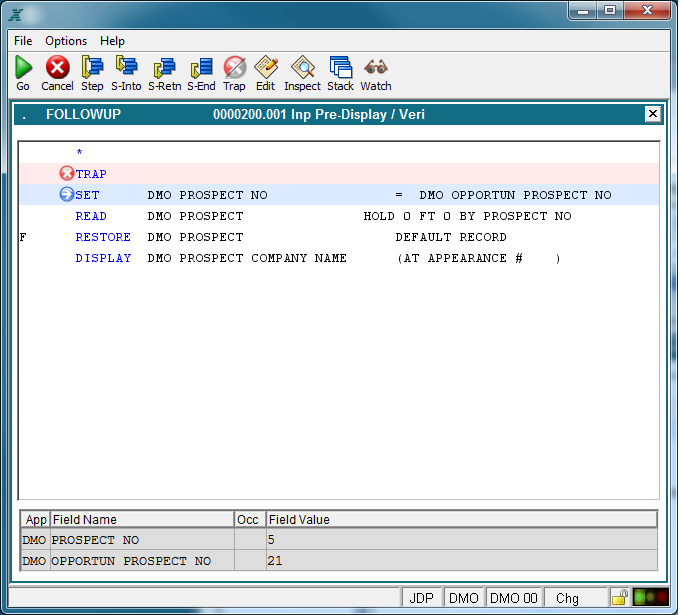Chapter 4-5: The Appx ILF Debugger |
Display and Debugging Area The statement display and debugging area shows individual statements, and is where you specify which statements to include in the debugging operation. Note that the statement line where the cursor is positioned is highlighted; this is called the current line. This area is shown below:
Display and Debugging Area of a Debugger Screen |
Application Design Manual "Powered by Appx Software"937 ©2006 By APPX Software, Inc. All Rights Reserved |
